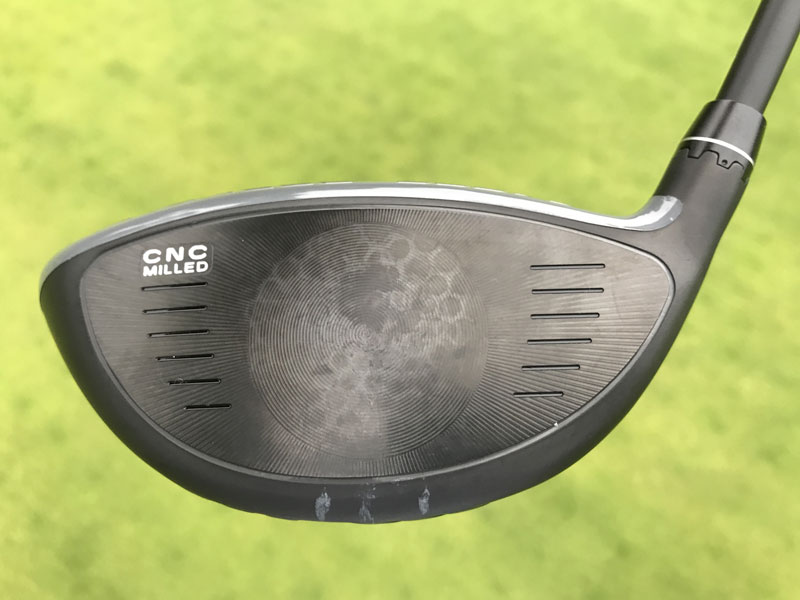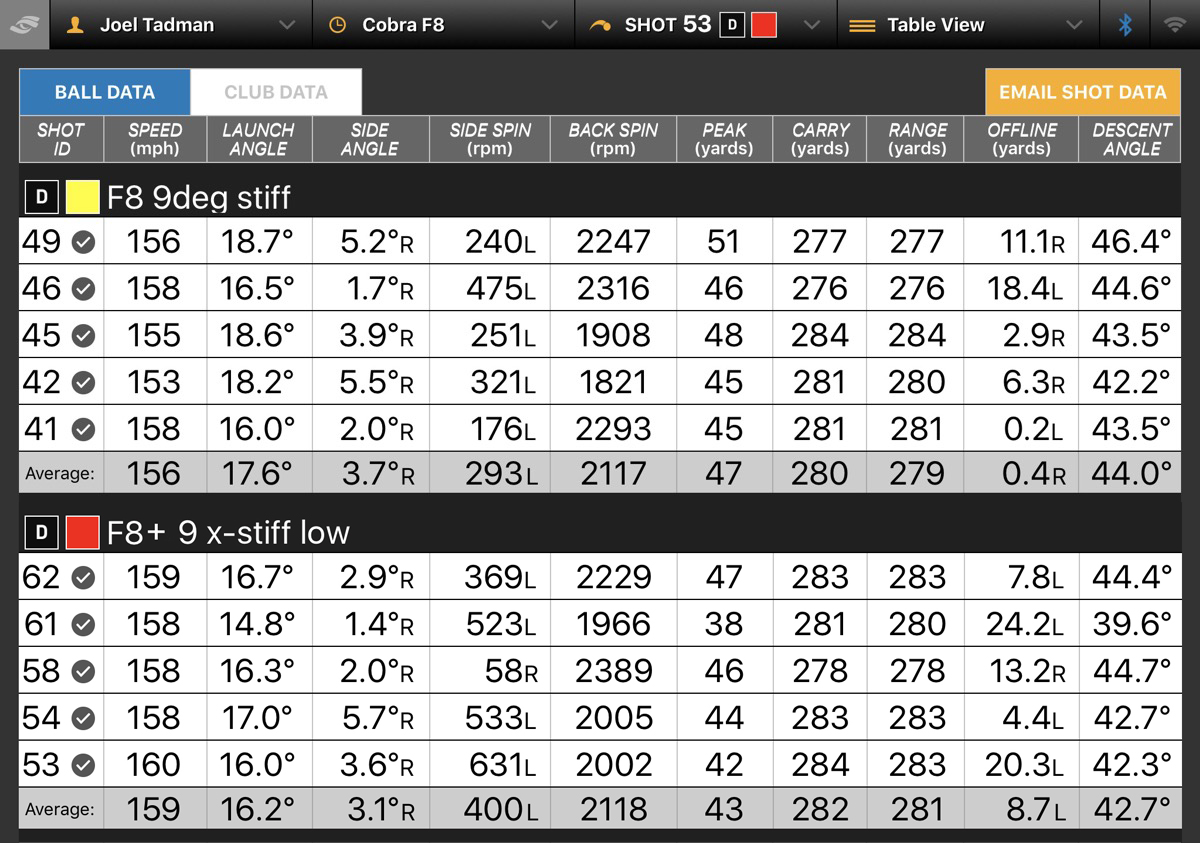Cobra King F8 Drivers
What did we make of Cobra's latest driver offerings?

Cobra seem to have placed more focus on the performance golfers experience on the course rather than the appearance on the shelf and that’s a smart move. While the grey may fail to catch the eye, your attention is caught by the impressive all-round performance of both drivers as well as the modest price tag that accompanies it. While the carry distance was comparable with more premium drivers launched in 2017, the accuracy that came with it will be a saviour for those who currently struggle finding fairways. The busy address look won’t be to everyone’s taste, but the CNC Milled Face seems to genuinely help make the King F8 a more user-friendly offering and with the F8+ model, all abilities and swing types look to be catered for. Factor in the Cobra Connect technology, which will highlight strengths and weaknesses via a free app, the value for money here is exceptional.
-
+
Improvements in distance but most will see bigger gains in accuracy and forgiveness.
-
-
Busy looking crown could be a distraction. Lacks shelf appeal visually.
Why you can trust Golf Monthly

Cobra King F8 Drivers Review - We test out both the Cobra King F8 and F8+ drivers to find out the difference between the two and how they perform overall
Cobra King F8 Drivers Review
The King F8 is aimed at a range of abilities seeking enhanced all-round performance as well as the option of a more draw-biased flight while the F8+ will suit a lower handicap range and/or faster swing speeds because of its low spin and launch setting, lower loft range and smaller address profile.

Key Technology A new CNC Milled titanium face produces more consistent bulge and roll properties for improved distance and accuracy. 360˚ Aero on the front part of the crown and sole reduce aerodynamic drag for more clubhead speed while adjustable sole weights alter launch, spin and shot shape.
How we Tested We collected data from both models on our GC2 launch monitor using premium golf balls and also put them in play on the course.

Looks Large profile with a traditional shape boosts confidence. The polymer trips that make up the 360˚ Aero, along with the carbon fibre behind, make it a busy looking clubhead but the contrast between the black face and 'nardo' grey crown front section highlights face angle alignment.
GEAR TEST: Cobra King F8+ v King F7+ Drivers
Subscribe to the Golf Monthly newsletter to stay up to date with all the latest tour news, equipment news, reviews, head-to-heads and buyer’s guides from our team of experienced experts.
Forgiveness Arguably this driver’s strongest suit. It feel significantly more stable and faster generally, especially on off-centre hits, than previous Cobra drivers and the launch monitor data backs up this theory with the distance between the shortest and longest hit smaller than expected.

Ball Flight The F8 is still a high launching driver, which will suit mid-to-slow swing speeds, while faster swingers will call upon the lower loft range of the F8+ model, along with the front weight option, to bring the flight down to a playable level although it was still a touch high, peaking at 43 yards. Low spin levels meant the ball didn’t climb too high during the flight and helps maximise carry distance.
Performance The average carry distance of 282 yards is one of the longest we’ve experienced in recent years. We can’t tell for sure if this was down to how we were swinging on the day, nor do we know which technology contributed most to it, but the numbers speak for themselves.

Switching to the F8+ model, with the heavier 12g weight in the front of the head, increased ball speed by 3mph, carry distance by two yards and brought the ball flight down but it was interesting that spin was similarly low for both (around 2100 rpm) with the F8 model launching much higher but also providing a tighter dispersion generally.
In fact, the Cobra King F8 was extremely accurate. Much of this accuracy, and the extra launch and flight, could have been down to having the heavier weight in the back of the head, which increases MOI (resistance to twisting) and dynamic lofting.

Joel has worked in the golf industry for over 15 years covering both instruction and more recently equipment. He now oversees all equipment and video content at Golf Monthly, managing a team of talented and passionate writers and presenters in delivering the most thorough and accurate reviews, buying advice, comparisons and deals to help the reader or viewer find exactly what they are looking for.
One of his career highlights came when covering the 2012 Masters he got to play the sacred Augusta National course on the Monday after the tournament concluded, shooting a respectable 86 with just one par and four birdies. To date, his best ever round of golf is a 5-under 67 back in 2011. He currently plays his golf at Burghley Park Golf Club in Stamford, Lincs, with a handicap index of 3.1.
Joel's current What's In The Bag?
Driver: Titleist GT3, 9°, Fujikura Ventus Black 6 S shaft.
Fairway wood: Titleist TSR3, 15°
Hybrid: Titleist TSi2, 18°
Irons: Titleist T150, 4-PW
Wedges: Titleist Vokey SM10, 50°, 54° and 58°
Putter: LAB Golf DF3
Ball: 2025 Titleist Pro V1x